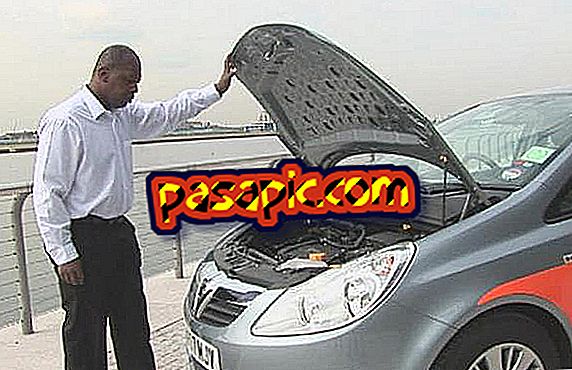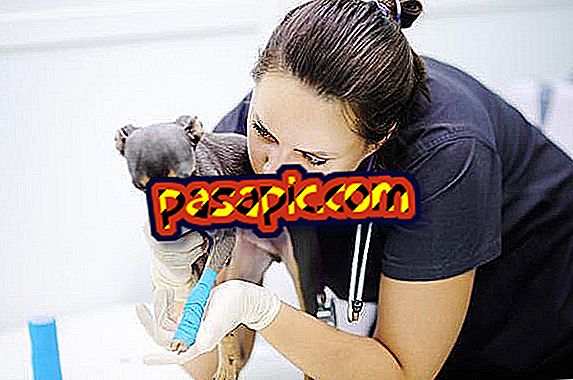What to check in the car before traveling

Going out on the road, nowadays, is dangerous if we do not have sufficient precautions. There are many vehicles, trucks and agricultural machinery . But, we can do something to prevent problems and inconvenience. Checking the car or car before traveling is very important, not only for our own safety and that of others, but also to avoid getting stuck in the middle of the route .
In some provinces a Vehicular Technical Inspection is mandatory, which controls certain aspects of the vehicle to give us a diagnosis. This, however much one may question the business that hides behind that; It is useful for those who want to fix the car and avoid accidents.
one
Short trips:
- Check the brakes: they respond well.
- Low lights: That work and intensity.
- Winks and beacon: that all work.
- Clean glass (read how to clean the windshield better).
- Check the water and automatic windshield wiper.
- Check the pressure of the covers: in a specialized rubber shop.
- Oil, naphtha.
- Security elements: beacons (triangles), fire extinguishers, and cat.
- Documents of the car: National Identity Card or Identity Card, Green or Blue Card, Driver's License (license), Last payment of compulsory insurance, etc.
- Cell phone charged and with credit.
- Take change for the toll.
two
Medium trips:
- Check the brakes: review of pads and tape in a specialized workshop.
- Low lights, winks, beacon, stop light (braking), ribbons or reflective material.
- Clean glass (read how to clean the windshield better).
- Check the cooling water and the automatic glass cleaner.
- Check wheel pressure in a serious and specialized engine.
- Check the oil, see renewal date (change). Check that there are no leaks, spots, etc.
- Security elements: beacons (triangles), fire extinguishers, and cat. Recommended: carry a screwdriver with pointer, a clamp, a knife, a flashlight and a cloth.
- Documents of the car: National Identity Card or Identity Card, Green or Blue Card, Driver's License (license), Last payment of compulsory insurance, etc. Papers and telephone of the service of cranes (mechanical aid).
- Map or approximate route: write down the road, some town to stop, which routes or detours take. Take into account the larger cities in case you need a workshop, check the CNG and naphtha stations on the route.
- Cell phone charged and with credit. I recommend bringing in the glove compartment, along with the documents, $ 50 (or one hundred) for emergency expenses.
- Carry change for the toll (about $ 10 pesos in two or coins).
3
I used to question this about the obligatory daytime lowlights, but now that I drive, I realize that it is necessary to use them and that they have the corresponding power. At night, you have to be careful, if they are very strong they dazzle.
4
Each, depending on its size, type and weight of the car must have a different pressure. That you can consult it in the manual of the car, forums of Internet that speak on mechanics or in a gomería of confidence. Generally it is placed between 25 and 35, always depending on the aforementioned characteristics. Always check cold, when the car has been at rest for a few hours, and without charging.
5
It is the water used by the refrigerant circuit (and the radiator), to keep the engine cold. Distilled water is used, only in some models where indicated refrigerant should be added, but that you will have to consult with the mechanic who advises you. Make sure you know where the maximum and minimum level in the deposit is marked, sometimes you see very little; We recommend highlighting it with indelible fiber.
6
It is very important to know that our brakes will respond to a need . Whether we are distracted, an animal is crossed, we need to use them to stop at a traffic light or wherever, we must check front and rear brakes, in addition to the hand brake travel. To know if it is in conditions, you should try them at a normal speed and when you press the pedal, you will not feel noises, whistles, deviations from the direction in which you are going.
7
It is the one that tries that everything works without being damaged, and having it in condition is vital for a vacation trip without mechanical problems. The location of the dipstick should be detected, extracted and cleaned with kitchen paper, always with the car cold (minimum 4 hours without operation and parked on a flat surface, without slope). The rod is inserted again and two minutes are expected, it is removed and the level, color and if it has grit is verified.
8
If it catches a rain, earth storm or some inclement weather, it is necessary that the windscreen wiper blades are in good working order and in good condition. They are purchased to change in replacement houses, lubricants and service stations. In addition, it is good to always have a full tank of liquid glass, with a special chemical that helps cleaning, antifog and remove the bugs that may stick on the route.
9
While you are on top of the vehicle, ask someone else to observe different lights from the outside. Winks, beacons, stop light (when pressing the brake pedal), recoil (when turning the reverse gear), low, high, position lights, and any other that had the car model you have. Remember that in the Argentine Republic it is mandatory by law, more than 10 years ago, to have the low lights on during 24 hours on all the country's routes.


